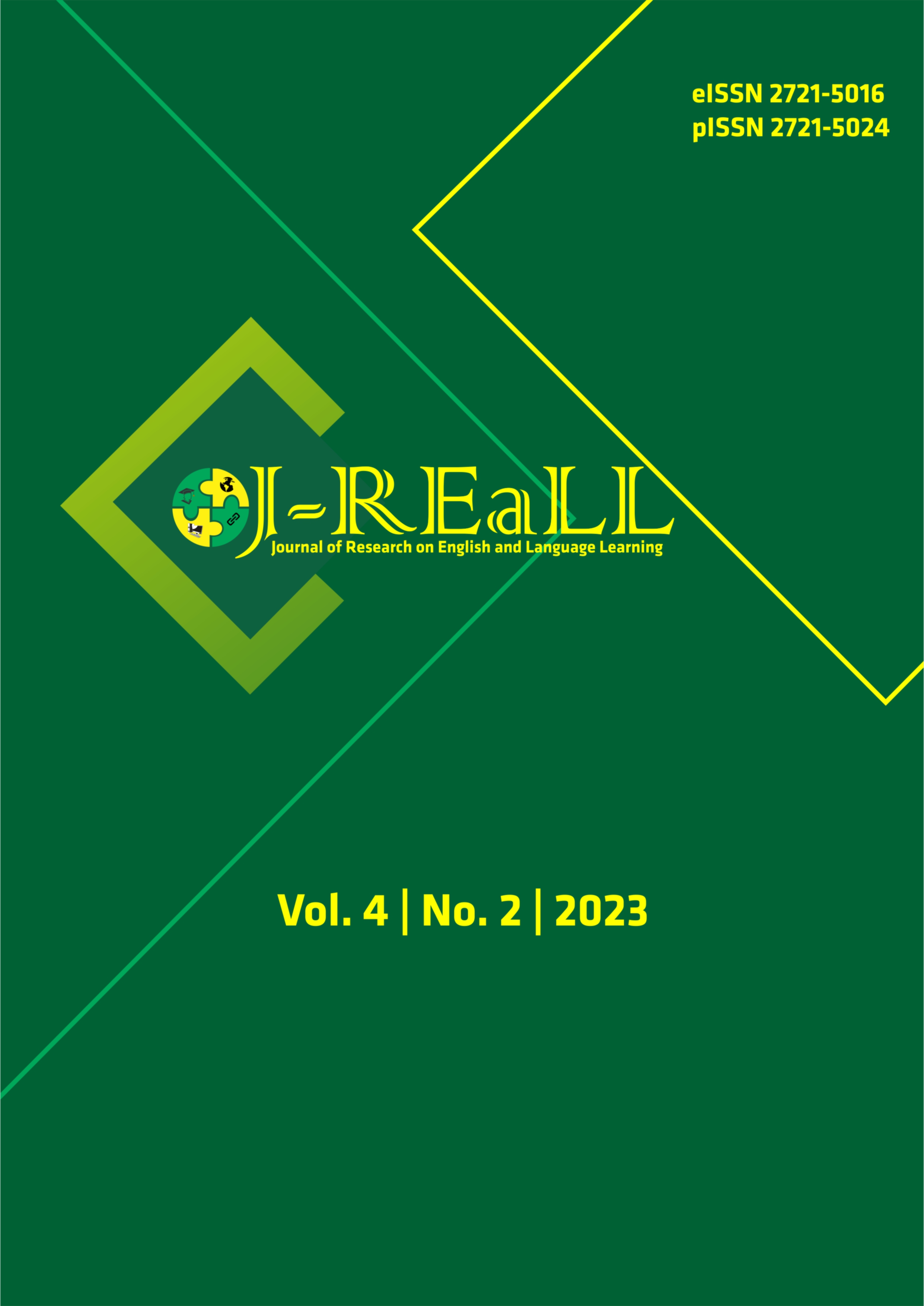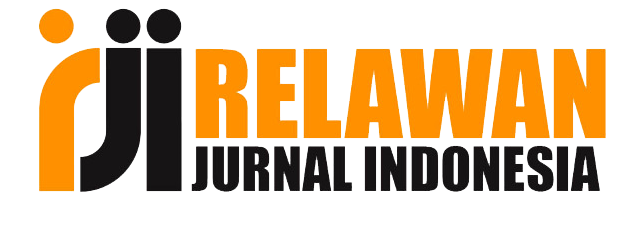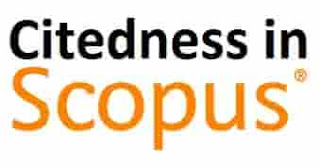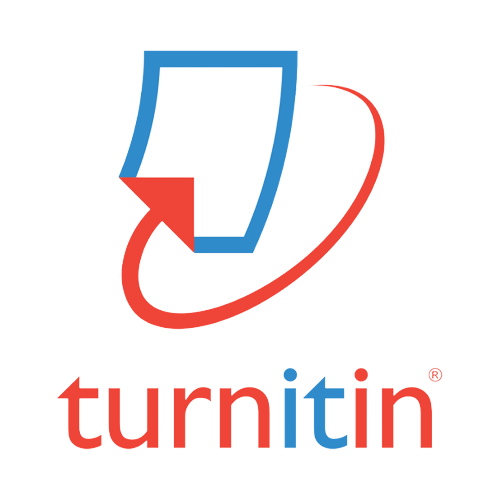The 4Cs learning model in the English Tadris Study Program: How fourth-semester students view it
DOI:
https://doi.org/10.33474/j-reall.v4i2.19919Keywords:
4Cs learning model, students’ perception, teaching and learningAbstract
This study focuses on the student’s perceptions of the critical thinking, communication, collaboration, and creativity (4Cs) learning model. The aim of this study is to analyze how students perceive the 4Cs learning model. This study used a descriptive qualitative method to describe the students' perception of the 4Cs learning model. The respondents of this study are 58 fourth-semester students of English Tadris Study Program consisting of 15 males and 43 females. The data was collected by using questionnaires and interviews. The data was analyzed using the Likert Scale analysis and the interview was analyzed using data reduction, display data, and conclusion. The trustworthiness used triangulation and member check. The findings revealed that the students strongly agreed that the 4Cs learning model is the 21st-century learning model that helps students to enhance their English skills and prepare them for their future careers and also found that many challenges in the 4Cs learning model implementation such as students’ motivation, student’s confidence, and psychological factors; such as shame, low motivation, and less confidence; the limited access to technology and electricity. From this study, it is suggested to integrate and facilitate the 4Cs learning model in the student’s learning process to enhance the student’s skills: critical thinking, communication, collaboration, and creativity.
References
Sudijono, A. (1996). Pengantar evaluasi pendidikan. RajaGrafindo Persada.
Arifin, Z. (2017). Mengembangkan instrumen pengukur critical thinking skills siswa pada pembelajaran matematika abad 21. Jurnal THEOREMS (The Original Research of Mathematics), 1(2).
Arikunto, Suharsimi. (2013). Prosedur penelitian suatu pendekatan praktik. In Jakarta: Rineka Cipta.
Astuti, A. P., et. al (2019). Preparing 21st century teachers: Implementation of 4C character’s pre-service teacher through teaching practice. Journal of Physics: Conference Series, 1233(1). https://doi.org/10.1088/1742-6596/1233/1/012109
Bedir, H. (2019). Pre-service ELT teachers’ beliefs and perceptions on 21st-century learning and innovation skills (4Cs). In Journal of Language and Linguistic Studies (Vol. 15, Issue 1).
Choleva, V., et. al (2022). Integrating the 4Cs into creating games by visual programming and project-based learning. Proceedings of the European Conference on Games-Based Learning, 2022-October. https://doi.org/10.34190/ecgbl.16.1.694
Clason, D., & Dormody, T. (1994). Analyzing data measured by individual Likert-type items. Journal of Agricultural Education, 35(4). https://doi.org/10.5032/jae.1994.04031
Espinar Redondo, R., & Ortega Martín, J. L. (2015). Motivation: The road to successful learning. PROFILE Issues in Teachers’ Professional Development, 17(2). https://doi.org/10.15446/profile.v17n2.50563
Joshi, A., et. al (2015). Likert scale: Explored and explained. British Journal of Applied Science & Technology, 7(4). https://doi.org/10.9734/bjast/2015/14975
Kesuma, D., et. al (2021). Development of a Jigsaw-type cooperative learning model based on critical thinking, communication, collaboration, and creativity (4Cs) to improve problem-solving ability in thematic learning. Multicultural Education, 7(12).
Kogut, L. S. (1996). Critical thinking in general chemistry. Journal of Chemical Education, 73(3). https://doi.org/10.1021/ed073p218
Kurniawan, T. T., et. al (2021). Analysis of 4C-based HOTS assessment module on critical thinking ability. Journal of Physics: Conference Series, 1823(1). https://doi.org/10.1088/1742-6596/1823/1/012101
Likert, R. (1932). A technique for the measurement of attitudes. Archives of Psychology, 140.
Miles, M. B. & A. M. H. (2014). Qualitative data analysis, a methods sourcebook, Edition 3. USA: Sage Publications. Terjemahan Tjetjep Rohindi Rohidi, UI-Press. Qualitative Data Analysis, A Methods Sourcebook, Edition 3. USA: Sage Publications. Terjemahan Tjetjep Rohindi Rohidi, UI-Press.
Muchson, M. (2023). Application of the project based learning model to improve 21st century competence 4C. International Journal of Research and Review, 10(1). https://doi.org/10.52403/ijrr.20230173
Purwasih, R., eet. al (2021). Blended learning model in improving 4C abilities of information system students. JPI (Jurnal Pendidikan Indonesia), 10(4). https://doi.org/10.23887/jpi-undiksha.v10i4.30939
Ratminingsih, N. M., eet. al (2021). 4C-based learning model: What, why, how. JPI (Jurnal Pendidikan Indonesia), 10(2).
Robberts, A. S., & Van Ryneveld, L. (2022). Design principles for introducing 21st century skills by means of game-based learning. Industry and Higher Education, 36(6). https://doi.org/10.1177/09504222221079210
Ruminar, H., & Gayatri, P. (2019). Incorporate 4c’s skills in EFL teaching and learning to face education challenges in the 4IR. The First International Conference on Teacher Training and Education, 14(3).
Zubaidah, Siti. (2018). Mengenal 4C: Learning and innovation skills untuk menghadapi era revolusi industri 4.0. 2nd Science Education National Conference, September.
Snyder, L. G., & Snyder, M. J. (2008). Teaching critical thinking and problem solving skills. The Delta Pi Epsilon Journal, L (2).
Sugiyono (2017). Metode penelitian bisnis (Pendekatan kuantitatif, kualitatif, kombinasi dan R&D. Bandung: Alfabeta
usetyarini, E., eet. al (2022). Analysis of students’ collaborative, communication, critical thinking, and creative abilities through problem-based learning. Jurnal Penelitian Dan Pengkajian Ilmu Pendidikan: E-Saintika, 6(1). https://doi.org/10.36312/esaintika.v6i1.584
Thornhill-Miller, B., et. al (2023). Creativity, critical thinking, communication, and collaboration: assessment, certification, and promotion of 21st century skills for the future of work and education. Journal of Intelligence, 11(3). https://doi.org/10.3390/jintelligence11030054
Wulandari, R. (2021). Characteristics and learning models of the 21st century. Social, Humanities, and Educational Studies (SHEs): Conference Series, 4(3). https://doi.org/10.20961/shes.v4i3.49958
Downloads
Published
How to Cite
Issue
Section
License
Copyright (c) 2023 Nanik Shobikah

This work is licensed under a Creative Commons Attribution 4.0 International License.
Authors who publish this journal agree to the following terms:
- Authors retain copyright and grant the journal right of first publication with the work simultaneously licensed under a Creative Commons Attribution License that allows others to share the work with an acknowledgement of the work's authorship and initial publication in this journal.
- Authors can separately make additional contractual arrangements for non-exclusive distribution published by the journal (e.g., publish it in a book), with an acknowledgement of its initial publication in this journal.
- Authors are allowed and encouraged to send their work via online (e.g., in the institutional repositories or their website) after published by the journal.






















